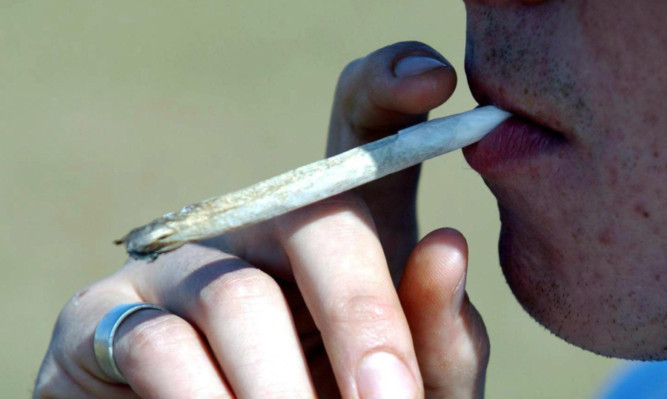The number of Scots admitted to hospital because of cannabis use rocketed by 50% in just five years, new figures have revealed.
The figures, from NHS Scotland’s Information Services Division, show there were 609 people taken into hospital because of their cannabis use in 2011-12, up from 406 just five years before.
Now experts are calling on the Scottish Government to do more to warn people about the dangers of cannabis.
They claim cannabis can have a detrimental effect on mental health, particularly for a small number of vulnerable users who have an inherited predisposition to schizophrenia.
Cannabis, a Class B drug, has also been liked to a range of respiratory problems.
Professor Neil McKeganey, director of the Centre for Drug Misuse Research in Glasgow, said the number of cannabis-related admissions is rising even though the number of people using the young people using the drug is actually on the wane.
He said: “We have been seeing falling levels of cannabis use amongst young people in Scotland for some years.
“The increase in cannabis-related hospital discharges is in all probability due to the increased potency of cannabis that is now being consumed coupled with the likelihood that individuals are smoking greater quantities of the drug.
“We know that cannabis, particularly when consumed by young people, significantly increases the risk of mental health problems and schizophrenia in particular.
“The increase in the numbers of young people being admitted to hospital within Scotland as a result of their cannabis use is worrying and indicates why this drug should not be regarded as a soft drug that can be smoked with very little adverse reaction.”
A police spokeswoman said that anyone who is caught in possession of cannabis risks a criminal record.
“There has been an urban myth that if caught with cannabis you would only get a caution, but that has never been the case in Scotland,” she said.
“Anyone who is found with any drug will be reported to the procurator fiscal.”
The total number of discharges from Scotland’s hospitals for drug misuse was 6,261 in 2011-12, up from 5,479 in 2007-08.
The figures were part of an avalanche of statistics revealing a growing number people over the age of 35 are being admitted to hospital for drink and drug abuse.
Drug-related hospital admission numbers among over-35s have risen by more than 40% since 2007-08. Alcohol-related hospital discharges among all age groups have fallen 13% in five years.
A Scottish Government spokesperson said: “We are seeking to address Scotland’s long-standing legacy of drug misuse, which we inherited, through our national drugs strategy, the Road to Recovery.
“It aims to ensure that those who need treatment get it, and is backed by record investment in frontline services to help people recover £30.3 million in 2013-14, an increase of more than 20% since 2006-07.
“This data shows that people are accessing treatment in relation to their drug use and confirms the findings from previous statistical reports that while fewer young people are using illegal drugs there is a vulnerable group of people who have been using drugs for many years and who experience other chronic medical conditions alongside their drug use.”
